Charging
Proper care of your Lynx VTOL batteries is important to prevent damage to your aircraft and to maximize flight time. With a fully charged main battery, the Lynx VTOL will fly for about two hours. Frequent altitude changes, presence of wind, use of old batteries, temperature, payload power requirements, and your height above sea level can significantly reduce the flight endurance. Batteries perform better at medium or high air temperature and it is normal to observe shorter flight times in cold weather.
Lynx VTOL is powered by a pair of main batteries and a single dedicated battery for the vertical motors. The main batteries use Lithium Ion (LiIon) cells arranged as 9Ah 3S packs. In the aircraft, the main batteries are joined in series to create 9Ah 6S pack. A single LiIon cell can have a range between 4.2V (full) to 2.7V (empty) in its normal operating range. This means the main battery’s voltage range (in the aircraft) is 25.2V to 16.2V.
The VTOL battery is a high-discharge Lithium Polymer (LiPo) battery arranged as a 1.45Ah 6S pack. A single LiPo cell can have a range between 4.2V (full) to 3.3V (empty) in its normal operating range. This means the VTOL battery’s voltage range is 25.2V to 19.8V.
A well-balanced and healthy battery should have all cells within a very similar voltage.
Charging the main batteries can take up to two hours, depending on the charge level of the battery and the required cell balancing work. Charging the VTOL battery usually only takes an hour.
Charger Boards - Connect
Connect the battery charger boards to the charger.
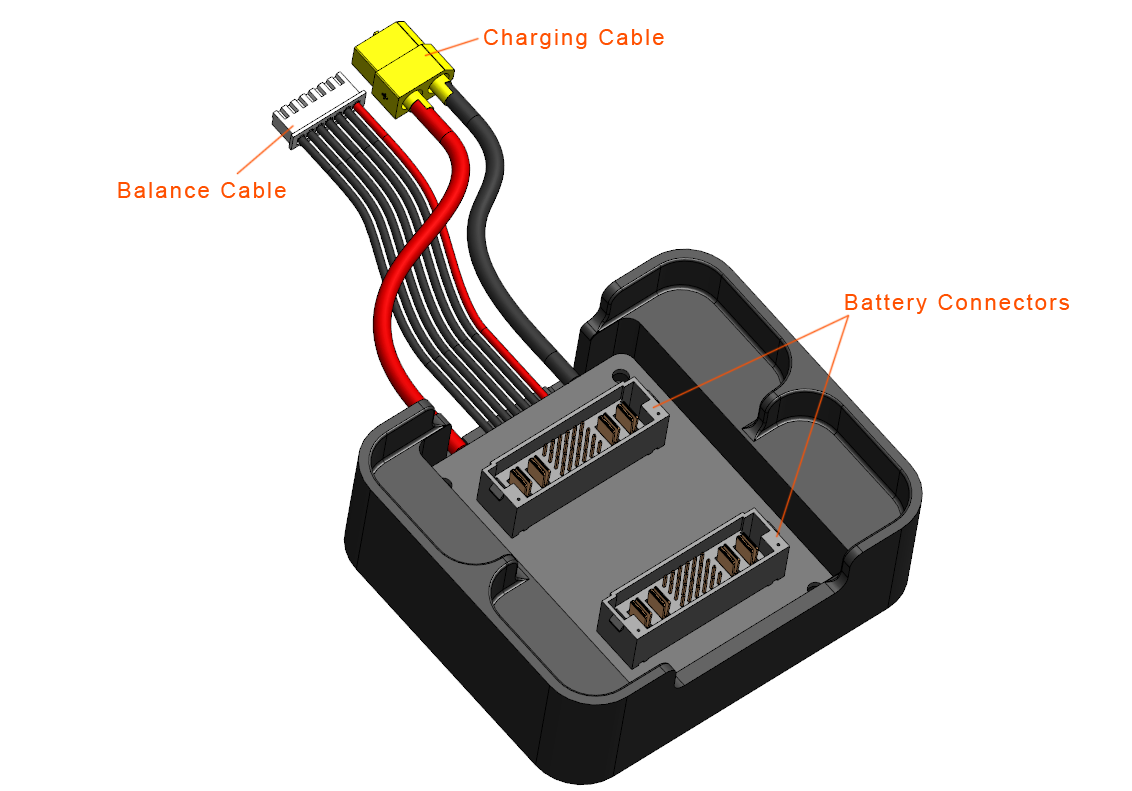
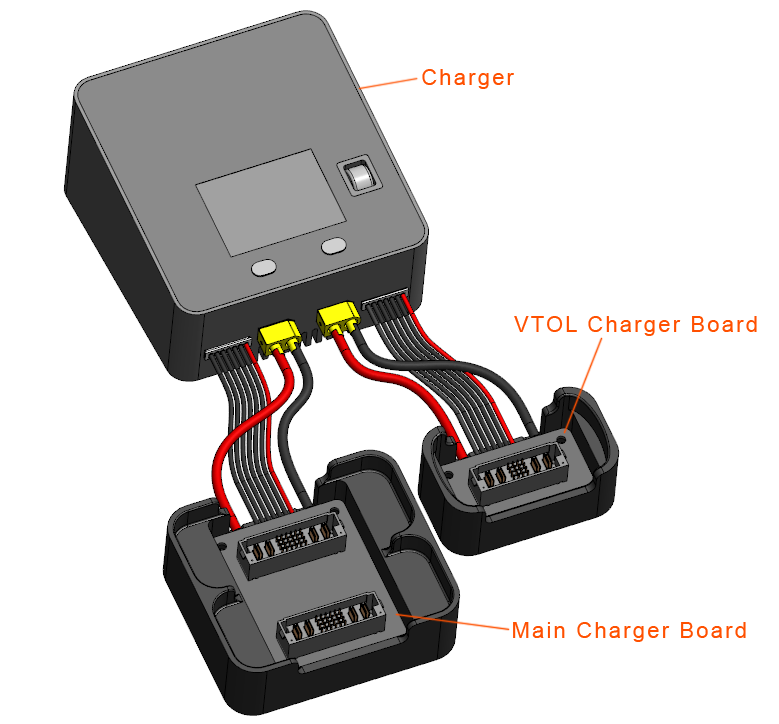
Ensure that the balance cable and charging cable for each board are connected into the same channel on the charger.
Charger - Turn On
Connect the charger power cable to an AC outlet.
Battery - Install
Install the batteries into their respective charger boards. The dual charger board is used for the main battery pair. The single board is used for the VTOL battery.
Caution: The battery connectors are keyed and only fit one way. Forcing the battery into the wrong orientation may damage the battery, the connector, and/or the charger board.
A warning of “To high balancer port voltage” may occur when the battery is connected. Wait for up to 15 seconds for this to clear automatically.
Channel - Select
Press the 1 button for the first charging channel.
Menu - Open
Press down on the scroll wheel to open the menu for the selected channel.
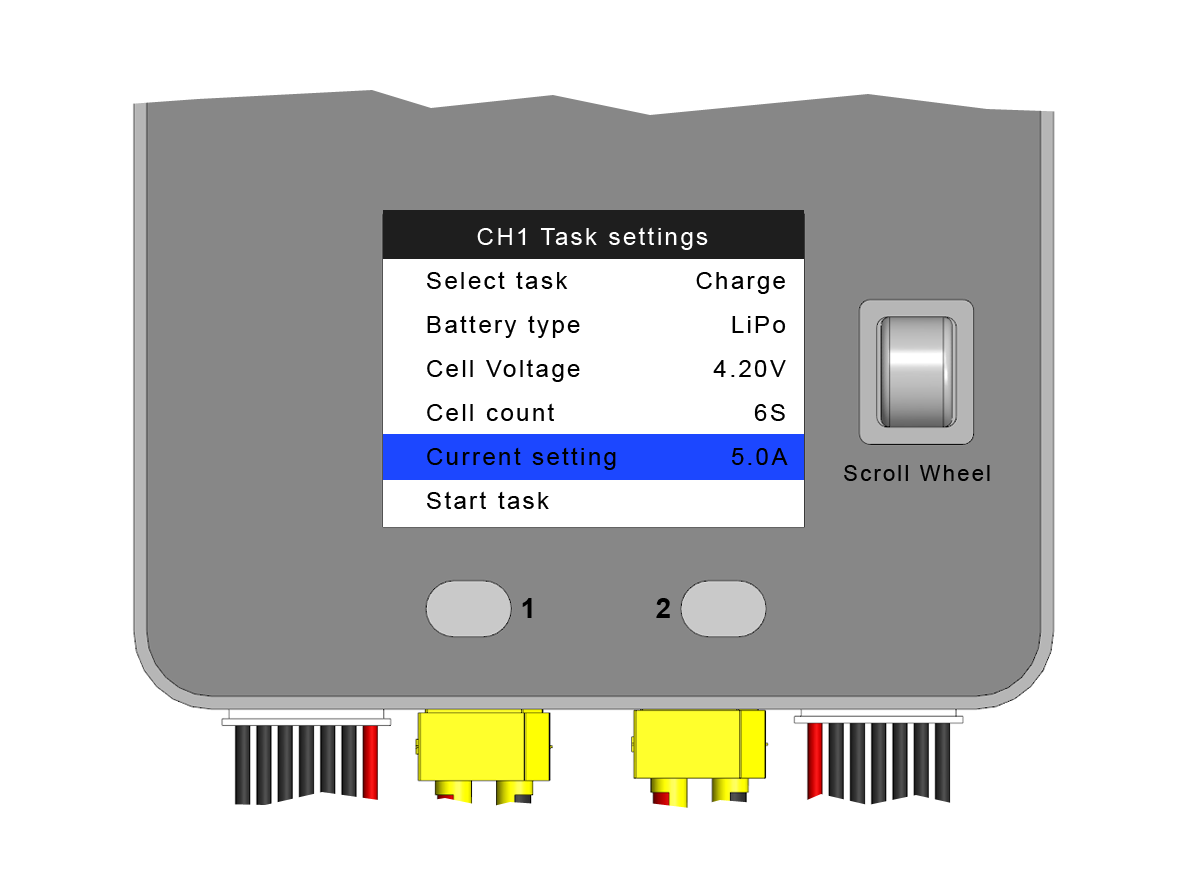
Charge Mode - Set
The charger needs to be running the charge task in order to charge the battery. This is done by scrolling to the “Select task” entry and pressing down on the scroll wheel. Then scroll and select "Charge".
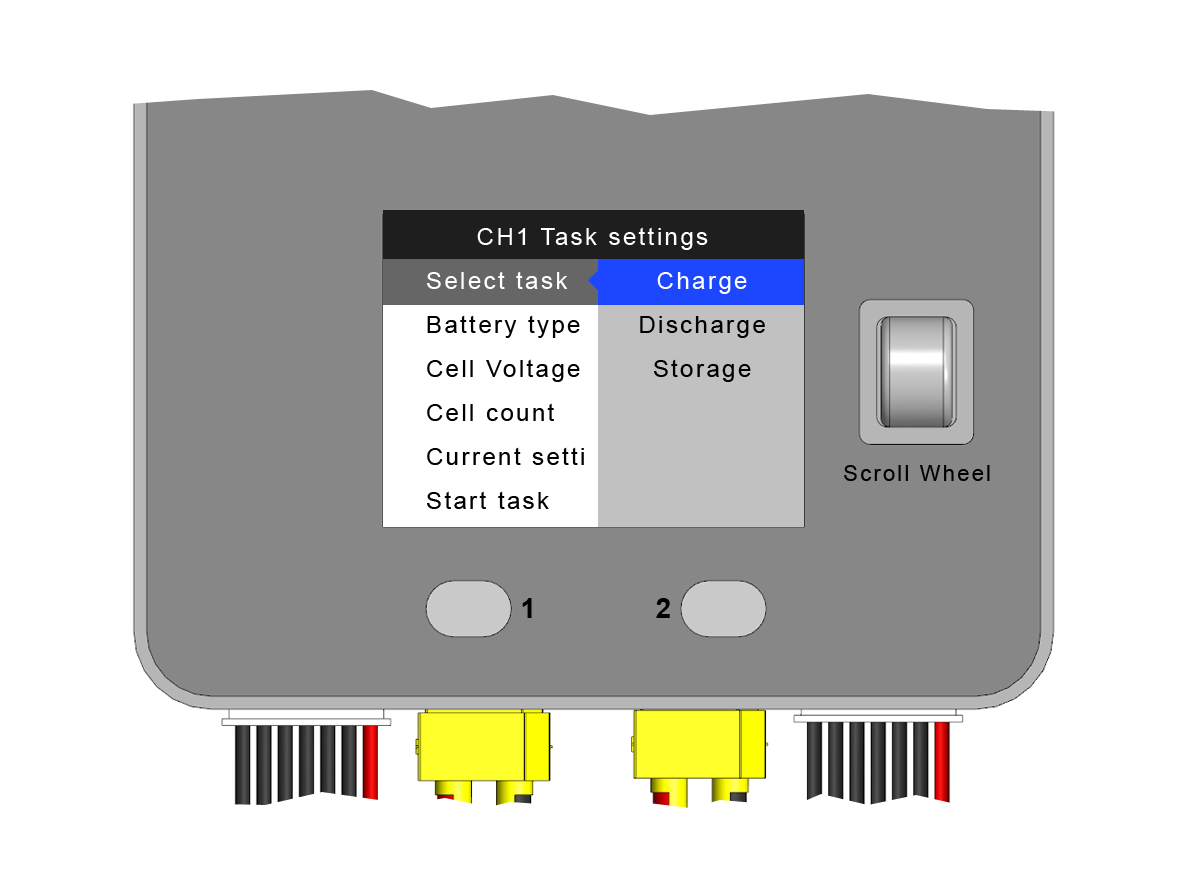
Charge Current - Set
Set the appropriate charging current for the battery. This is done by scrolling to the “Current setting” entry and pressing down on the scroll wheel. Then scroll and select the correct charge current.
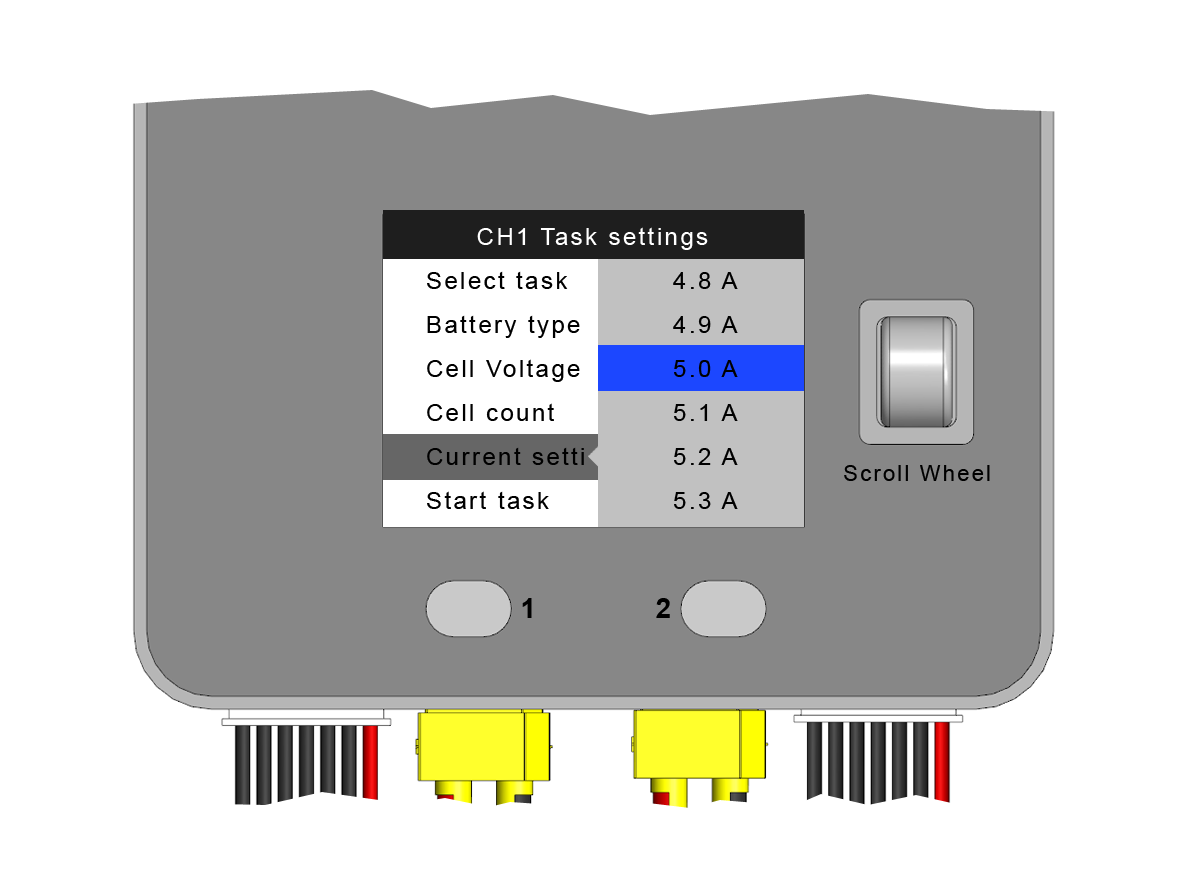
The charging current is printed on the battery charging board and can be found in the below table:
| Battery | Charge Current |
|---|---|
| Main Battery (LiIon charger board) | 5.0A |
| VTOL Battery (LiPo on charger board) | 1.4A |
Warning: Charging at a current higher than listed can damage the battery or cause a fire. A damaged battery will not fly as long as a healthy battery and pose a fire hazard. Do not exceed the listed charge current.
Charge - Start
Scroll down to the “Start task” menu entry and press down on the scroll wheel to start charging that battery.
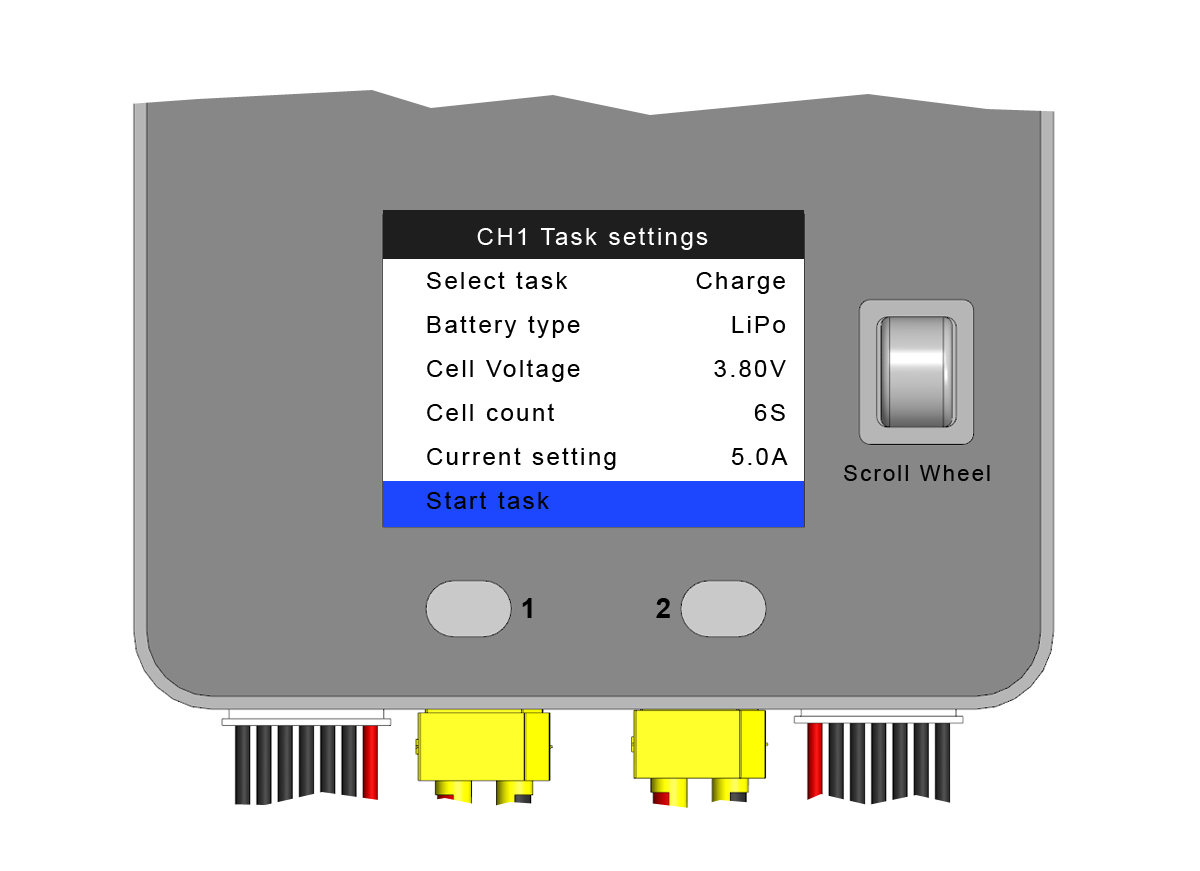
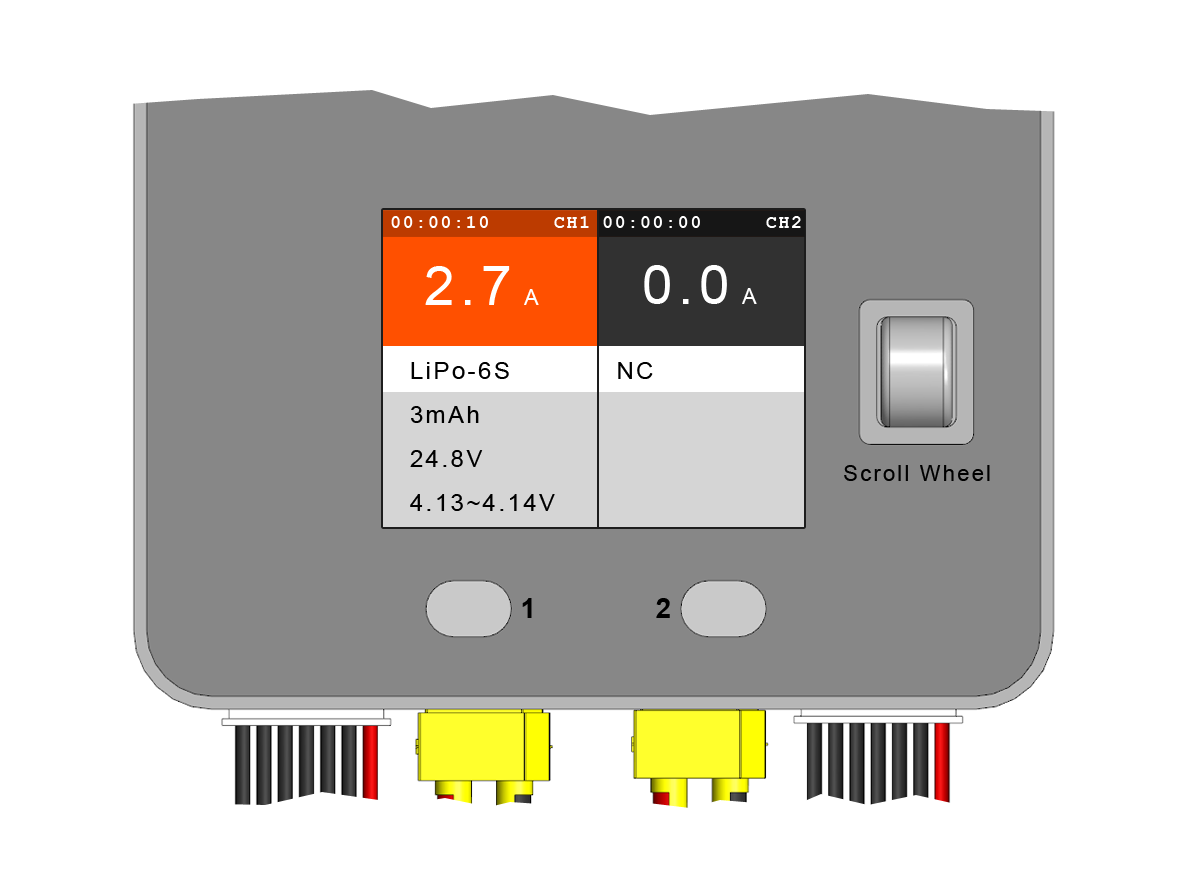
Second Battery - Start
Repeat the same steps as above but select channel two instead.
Warning: Never leave a battery charger unattended. A battery fire could happen if a defective or damaged battery is left unattended and overheats.
Charging - Complete
The charger will show an orange background while rapidly charging, a green background while balancing the cells, and a blue background when done. Wait until the battery has finished and displays a blue background. At this point, you may remove the finished battery from the charger board.
It is important to let the charger finish balancing the battery. Using unbalanced batteries can damage the battery and/or aircraft.